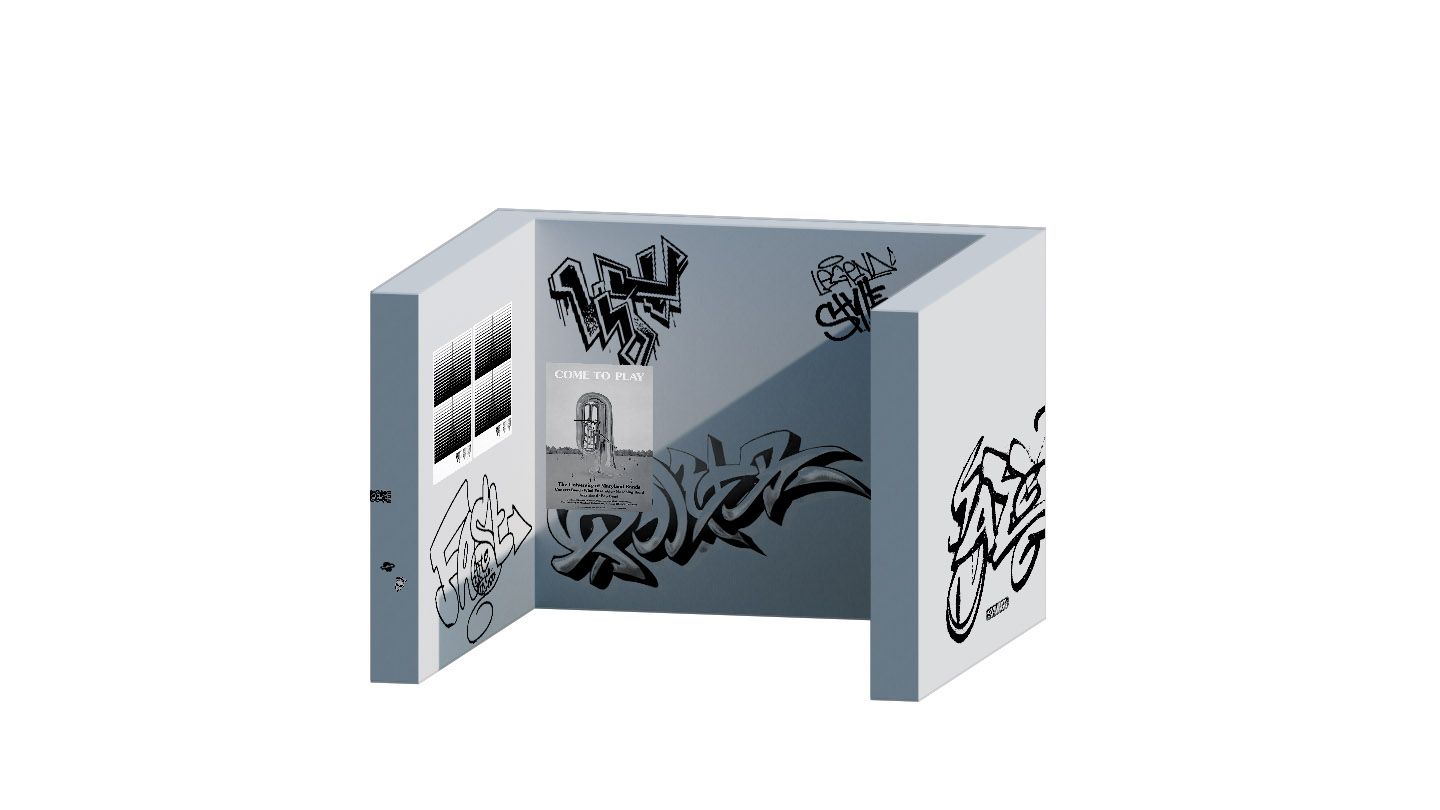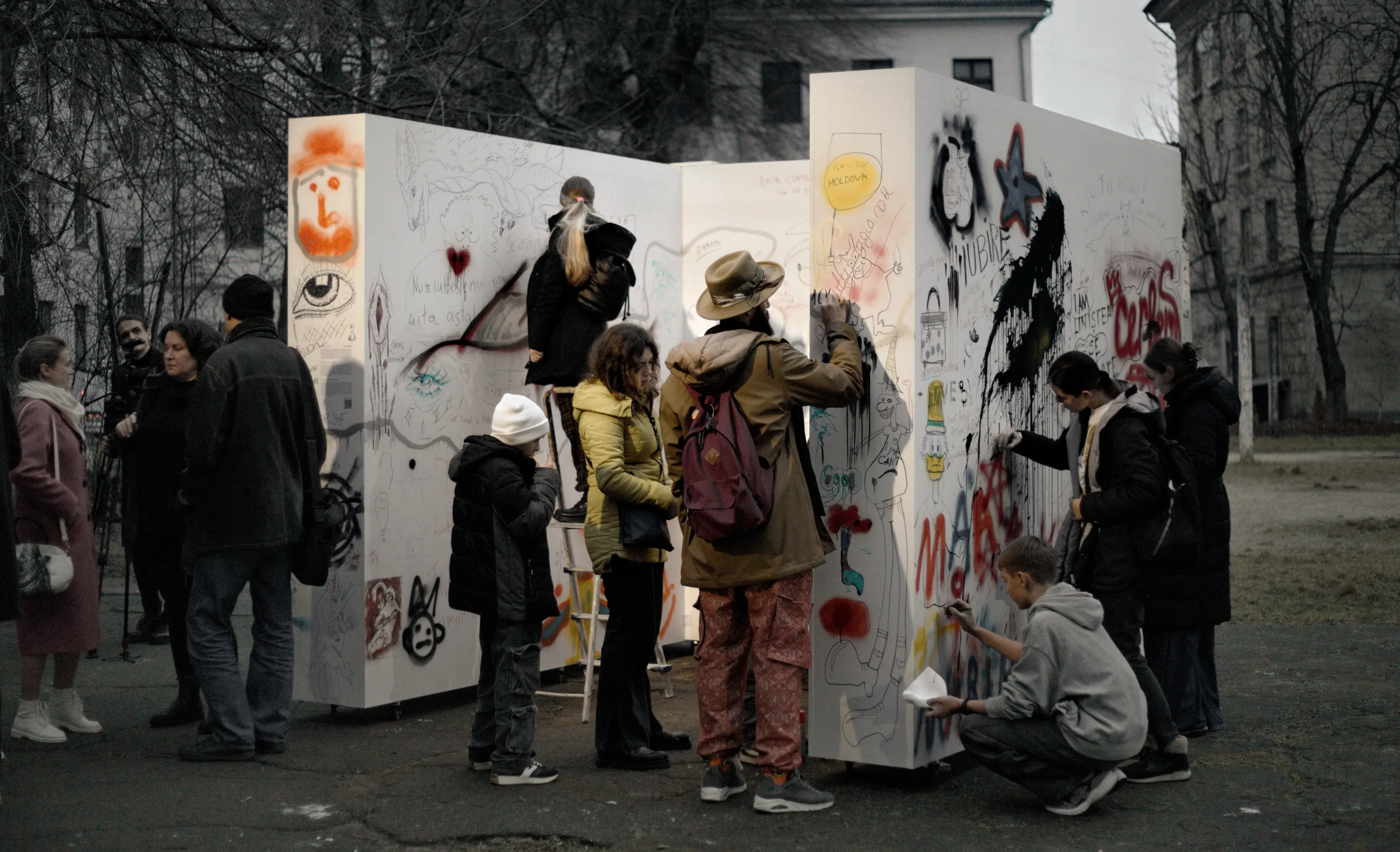if walls could tell
2024 ff.
ifwallscouldtell.public-preposition.net
___________________________________________
“Why the hell does everybody want to succeed?
I’d like to meet somebody who wanted to fail. That’s the only sublime thing.”
—John Dos Passos, Manhattan Transfer, 1925
_____________________________________________________________________
In anticipation of this year's laying of the foundation stone for the new Ars Aevi Museum of Contemporary Art on 19 August 2024, the renowned Düsseldorf conceptual artist Mischa Kuball is inviting the citizens of Sarajevo City to design three white walls for the museum exhibition from 22 August to the end of October with his art action in public space "if walls could tell" as a reference to the urban debate on the cultural-political significance of the future museum quarter and participation in Sarajevo's cultural life.
The transnational project if walls could tell by artist Mischa Kuball scrutinises art institutions in terms of their permeability to broader social groups within a community. Over a period of two to four weeks, three symbolic museum walls will be installed in public spaces in various cities in south-east Europe, where they will serve as an accessible and temporary stage for the inhabitants. Like a filter, these walls will catch all "traces" of cultural and urban expressions in the midst of people's urban lives, away from the cultural institutions to which they refer. Once imprinted by the environment and the people, the stage will then return to its institutional context to secure or further inscribe the traces left behind.
In 1925, John Dos Passos published the prototype of the modern urban novel: in "Manhattan Transfer", the American writer describes urban life in one of the fastest growing metropolises in the world: New York. At the beginning of the 20th century, more and more people dreaming of personal success and prosperity moved there. In order to cope with the enormous influx of people from home and abroad, city planners and architects pursued a plan that was as radical as it was innovative: the metropolis was to grow upwards - just like the ecological growth. Skyscrapers made of steel, concrete and glass quickly dominated the skyline of the cosmopolitan city on a grid layout. This urban planning principle soon came to symbolise urban society, in which rich and poor stood in stark contrast to one another. The modern monuments of a small elite literally eclipsed the poverty and despair of broad sections of the population.
Dos Passos' novel puts contemporary life to the test: social advancement versus disappointment in the face of the empty promises of success and consumerism. New York at the turn of the century often drew lots to decide who it wanted to save or dispossess. For the reader, this negotiation is a real test. It is made even more dramatic by an unusual narrative technique. As in a documentary film, Dos Passos thrusts the viewer into the reality of his characters' lives. He does not interpret them himself. Instead, he leaves the conclusions to the empathy of the viewer: The author moulds "fear" or "despair", the readers feel and name.
Another "cinematographic narrative element" in "Manhattan Transfer" is the use of the so-called "camera eye". Here, the reader's perspective is controlled by the narrator in such a way that it resembles a "camera eye". Dos Passos achieves this "setting" through mere hints in the text. They are perceived by the reader as random and can then be put together to form a new story. Through this strategy, the narrator relinquishes his leading position. He bridges the gap between the "actual" reality and the reality of the novel.
To reinforce this effect, Dos Passos uses only authentic news material in his narrative. Press releases play a particularly important role here: they appear, are important for a short time and then sink back into insignificance as quickly as they appeared. This form of short news serves Dos Passos as a metaphor for the fast pace of encounters and the anonymity of people in the big city.
With the story of Dos Passos in the background, the analogue museum_transfer - the transitory, almost dystopian change of place with its many inscriptions - focuses on the traces left on the walls, which are seen as a temporary space for the open and boundless expression of citizens in a participatory art project in public space. if walls could tell poses current social questions: Can civil society live without museums, and will this dissolve or break the cultural promise to future generations? What are the interactions between society, museums, citizens, artists and curators?
As a catalyst in this context, Mischa Kuball opens up the space for all citizens, who in turn become direct producers of content, participants and co-authors in the production of a collaborative work of art. They are thus seen as political subjects who should be able to appropriate all available tools that make them active users and not passive consumers, which raises the question: What happens when citizens, potential museum audiences and artists are given "freedom of expression" in public spaces, which is unusual for museum exhibition policies and practices?
An important aspect of the project is the organisation of a public debate with artists, art historians, theorists, curators and others once the walls have been reinstalled in the museum or gallery. The discussion will be based on the previously observed social issues and problems in the respective local contexts and will be inspired by the interventions, statements and imprints left on the walls. The context-specific discursive programmes will be developed together with partner institutions and with speakers who are well acquainted with the local socio-political and artistic contexts.
"One of the key issues that the global as well as regional museums are facing in the 21st century is how to develop new models of working with the public. The recent concept of Museum 3.0, coined by art theorist Stephen Wright, is used to define and elaborate on the utterly different model of conceptualizing the way an institution functions in direct correlation with local communities. This model is based on projects where the public becomes the actor that produces the content and institutional programmes. Museum 3.0 concept represents the new role of museums and other art institutions in society, based on the analysis of the concept of utility. It is driven by usership and not by the expert culture that engages with the public. Usership is perceived as a new category of political subjectivity that is based on user-generated content. Herewith, the citizens as political subjects should be able to appropriate available political and economic instruments that turned them into active users and not passive consumers. In this context, the project of Mischa Kuball opens up the space for all potential users of art programmes to be turned into direct and immediate producers of the content.
Particularly, in the specific context of the countries that emerged after the dissolution of Yugoslavia, and other post-socialist countries and their institutions of culture, the questions that strike out are: how to deal with the common legacy of Socialism, how to build particular identities in each of the local contexts and their communities, and how to develop close networks of collaboration in the so-called post-Yugoslav, or wider South-East European artistic space. Each of the art institutions in countries such as North Macedonia, Bosnia and Herzegovina, Serbia, or Romania, have specific sets of problems starting from basic infrastructure, to financial and other basic issues. However, more importantly, the question that is often discussed in museological circles is how each museum or gallery can redefine its identity and role in society and fight for its integrity in order to reinterpret the concept of contemporaneity in the actual social moment of today. The continuous political pressure of “estradization of institutions” that are forced to reproduce the neoliberal model of producing the culture of spectacle cannot be neglected. In this context, the project of Mischa Kuball exactly touches on these sore points in each of the countries, and societies in question, opening up the debate in the public space about the role of cultural institutions in society, their communication to the public, and even the ones that are not museum-goers, and thus cherishes the artistic approach of critical reflection of social processes and how they influence the cultural sphere and museums and their public in particular.”
– Dr Zoran Erić, curator in Belgrade, has been involved in the idea since the beginning of the project and has conducted a large part of the preliminary discussions.

if walls could tell will open in a public space near the future Ars Aevi Museum of Contemporary Art in Sarajevo, designed by Renzo Piano.
The international collection of contemporary art Ars Aevi was founded in 1993 as an act of solidarity by the international art scene with the city of Sarajevo, which was besieged and destroyed for almost four years during the (anti-) Yugoslav wars of the 1990s. It is one of the most important and extensive collections of contemporary art in the entire Balkan region and is still provisionally housed in Sarajevo's Vijećnica City Hall. The Italian star architect Renzo Piano designed a museum building for the Ars Aevi collection back in 1995, which, adjacent to the Historical Museum of Bosnia and Herzegovina and in the immediate vicinity of the National Museum of Bosnia and Herzegovina, is intended to be the centrepiece of a new museum quarter linking the past and the future.
30 years after the end of the Bosnian War, the further developed museum project was presented in 2023 with the support of UNESCO, the Italian Embassy in Sarajevo, the City and Canton of Sarajevo, the Municipality of Novo Sarajevo as well as funding from the European Union and donations from private donors, with construction scheduled to begin this year.
Due to the special nature of the Ars Aevi art collection, which is currently "without permanent museum walls", the panel discussion on 12 September 2024 will take place at the site of the public installation and will deal with the plans for a museum district in Sarajevo. Mischa Kuball will talk with the director of the Ars Aevi Museum Senka Ibrišimbegović and renowned representatives of the local cultural and art scene about the role of the three museums in the city and society and how the result of this interactive art project can be curatorially integrated into the concept of the future Aers Aevi Museum exhibition, where it will find a permanent place after the end of the art project.
The process will be repeated in all partner cities, starting on 27 August 2024 at the National Museum of the Romanian Peasant in Bucharest, followed by Skopje, Kraljevica, Bihać, Čačak, Ljubljana, Chișinău and Cetinje in 2025. In each of the partner cities, the walls will return to the museum or gallery after their installation in public space, where panel discussions will be held to address the impact of participatory art in public space in their specific context. The project will end at the WELTKUNSTZIMMER in Düsseldorf, where the final discussion with all partners will take place.
Partners
- Ars Aevi Museum of Contemporary Art, Sarajevo
- The National Museum of the Romanian Peasant, Bucharest
- Museum of Contemporary Art, Skopje
- Center for Contemporary Culture KRAK, Bihać
- RIZOM [ K ] - Frankopan Castle, Kraljevica
- Art Gallery “Nadežda Petrović”, Čačak
- Center for Contemporary Art [KSA:K] with Galeria Plai, Chișinău
- MGML – Match Gallery, Ljubljana
- Faculty of Fine Arts, University of Montenegro, Cetinje
- WELTKUNSTZIMMER, Düsseldorf
The project is organized in cooperation with the Goethe Institute network in all respective partner countries.

